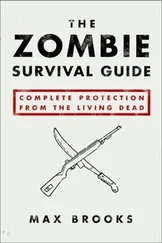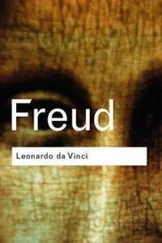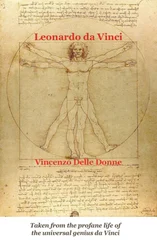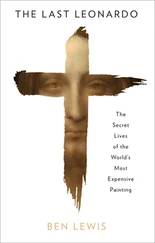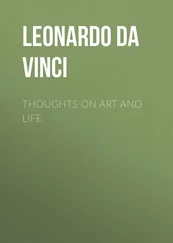Leonardo da Vinci - The Notebooks of Leonardo Da Vinci. Complete
Здесь есть возможность читать онлайн «Leonardo da Vinci - The Notebooks of Leonardo Da Vinci. Complete» — ознакомительный отрывок электронной книги совершенно бесплатно, а после прочтения отрывка купить полную версию. В некоторых случаях можно слушать аудио, скачать через торрент в формате fb2 и присутствует краткое содержание. Жанр: foreign_prose, foreign_home, visual_arts, foreign_antique, на английском языке. Описание произведения, (предисловие) а так же отзывы посетителей доступны на портале библиотеки ЛибКат.
- Название:The Notebooks of Leonardo Da Vinci. Complete
- Автор:
- Жанр:
- Год:неизвестен
- ISBN:нет данных
- Рейтинг книги:3 / 5. Голосов: 1
-
Избранное:Добавить в избранное
- Отзывы:
-
Ваша оценка:
- 60
- 1
- 2
- 3
- 4
- 5
The Notebooks of Leonardo Da Vinci. Complete: краткое содержание, описание и аннотация
Предлагаем к чтению аннотацию, описание, краткое содержание или предисловие (зависит от того, что написал сам автор книги «The Notebooks of Leonardo Da Vinci. Complete»). Если вы не нашли необходимую информацию о книге — напишите в комментариях, мы постараемся отыскать её.
The Notebooks of Leonardo Da Vinci. Complete — читать онлайн ознакомительный отрывок
Ниже представлен текст книги, разбитый по страницам. Система сохранения места последней прочитанной страницы, позволяет с удобством читать онлайн бесплатно книгу «The Notebooks of Leonardo Da Vinci. Complete», без необходимости каждый раз заново искать на чём Вы остановились. Поставьте закладку, и сможете в любой момент перейти на страницу, на которой закончили чтение.
Интервал:
Закладка:
III.
Six books on Light and Shade
Linear Perspective cannot be immediately followed by either the "prospettiva de' perdimenti" or the "prospettiva de' colori" or the aerial perspective; since these branches of the subject presuppose a knowledge of the principles of Light and Shade. No apology, therefore, is here needed for placing these immediately after Linear Perspective.
We have various plans suggested by Leonardo for the arrangement of the mass of materials treating of this subject. Among these I have given the preference to a scheme propounded in No. III, because, in all probability, we have here a final and definite purpose expressed. Several authors have expressed it as their opinion that the Paris Manuscript C is a complete and finished treatise on Light and Shade. Certainly, the Principles of Light and Shade form by far the larger portion of this MS. which consists of two separate parts; still, the materials are far from being finally arranged. It is also evident that he here investigates the subject from the point of view of the Physicist rather than from that of the Painter.
The plan of a scheme of arrangement suggested in No. III and adopted by me has been strictly adhered to for the first four Books. For the three last, however, few materials have come down to us; and it must be admitted that these three Books would find a far more appropriate place in a work on Physics than in a treatise on Painting. For this reason I have collected in Book V all the chapters on Reflections, and in Book VI I have put together and arranged all the sections of MS. C that belong to the book on Painting, so far as they relate to Light and Shade, while the sections of the same MS. which treat of the "Prospettiva de' perdimenti" have, of course, been excluded from the series on Light and Shade.
[Footnote III: This text has already been published with some slight variations in Dozio's pamphlet Degli scritti e disegni di Leonardo da Vinci , Milan 1871, pp. 30—31. Dozio did not transcribe it from the original MS. which seems to have remained unknown to him, but from an old copy (MS. H. 227 in the Ambrosian Library).]
GENERAL INTRODUCTION.
Prolegomena.
110
You must first explain the theory and then the practice. First you must describe the shadows and lights on opaque objects, and then on transparent bodies.
Scheme of the books on Light and shade.
111
INTRODUCTION.
[Having already treated of the nature of shadows and the way in which they are cast [Footnote 2: Avendo io tractato. —We may suppose that he here refers to some particular MS., possibly Paris C.], I will now consider the places on which they fall; and their curvature, obliquity, flatness or, in short, any character I may be able to detect in them.]
Shadow is the obstruction of light. Shadows appear to me to be of supreme importance in perspective, because, without them opaque and solid bodies will be ill defined; that which is contained within their outlines and their boundaries themselves will be ill-understood unless they are shown against a background of a different tone from themselves. And therefore in my first proposition concerning shadow I state that every opaque body is surrounded and its whole surface enveloped in shadow and light. And on this proposition I build up the first Book. Besides this, shadows have in themselves various degrees of darkness, because they are caused by the absence of a variable amount of the luminous rays; and these I call Primary shadows because they are the first, and inseparable from the object to which they belong. And on this I will found my second Book. From these primary shadows there result certain shaded rays which are diffused through the atmosphere and these vary in character according to that of the primary shadows whence they are derived. I shall therefore call these shadows Derived shadows because they are produced by other shadows; and the third Book will treat of these. Again these derived shadows, where they are intercepted by various objects, produce effects as various as the places where they are cast and of this I will treat in the fourth Book. And since all round the derived shadows, where the derived shadows are intercepted, there is always a space where the light falls and by reflected dispersion is thrown back towards its cause, it meets the original shadow and mingles with it and modifies it somewhat in its nature; and on this I will compose my fifth Book. Besides this, in the sixth Book I will investigate the many and various diversities of reflections resulting from these rays which will modify the original [shadow] by [imparting] some of the various colours from the different objects whence these reflected rays are derived. Again, the seventh Book will treat of the various distances that may exist between the spot where the reflected rays fall and that where they originate, and the various shades of colour which they will acquire in falling on opaque bodies.
Different principles and plans of treatment (112—116).
112
First I will treat of light falling through windows which I will call Restricted [Light] and then I will treat of light in the open country, to which I will give the name of diffused Light. Then I will treat of the light of luminous bodies.
113
OF PAINTING.
The conditions of shadow and light [as seen] by the eye are 3. Of these the first is when the eye and the light are on the same side of the object seen; the 2nd is when the eye is in front of the object and the light is behind it. The 3rd is when the eye is in front of the object and the light is on one side, in such a way as that a line drawn from the object to the eye and one from the object to the light should form a right angle where they meet.
114
OF PAINTING.
This is another section: that is, of the nature of a reflection (from) an object placed between the eye and the light under various aspects.
115
OF PAINTING.
As regards all visible objects 3 things must be considered. These are the position of the eye which sees: that of the object seen [with regard] to the light, and the position of the light which illuminates the object, b is the eye, a the object seen, c the light, a is the eye, b the illuminating body, c is the illuminated object.
116
Let a be the light, b the eye, c the object seen by the eye and in the light. These show, first, the eye between the light and the body; the 2nd, the light between the eye and the body; the 3rd the body between the eye and the light, a is the eye, b the illuminated object, c the light.
117
OF PAINTING.
OF THE THREE KINDS OF LIGHT THAT ILLUMINATE OPAQUE BODIES.
The first kind of Light which may illuminate opaque bodies is called Direct light—as that of the sun or any other light from a window or flame. The second is Diffused [universal] light, such as we see in cloudy weather or in mist and the like. The 3rd is Subdued light, that is when the sun is entirely below the horizon, either in the evening or morning.
118
OF LIGHT.
The lights which may illuminate opaque bodies are of 4 kinds. These are: diffused light as that of the atmosphere, within our horizon. And Direct, as that of the sun, or of a window or door or other opening. The third is Reflected light; and there is a 4th which is that which passes through [semi] transparent bodies, as linen or paper or the like, but not transparent like glass, or crystal, or other diaphanous bodies, which produce the same effect as though nothing intervened between the shaded object and the light that falls upon it; and this we will discuss fully in our discourse.
Читать дальшеИнтервал:
Закладка:
Похожие книги на «The Notebooks of Leonardo Da Vinci. Complete»
Представляем Вашему вниманию похожие книги на «The Notebooks of Leonardo Da Vinci. Complete» списком для выбора. Мы отобрали схожую по названию и смыслу литературу в надежде предоставить читателям больше вариантов отыскать новые, интересные, ещё непрочитанные произведения.
Обсуждение, отзывы о книге «The Notebooks of Leonardo Da Vinci. Complete» и просто собственные мнения читателей. Оставьте ваши комментарии, напишите, что Вы думаете о произведении, его смысле или главных героях. Укажите что конкретно понравилось, а что нет, и почему Вы так считаете.


